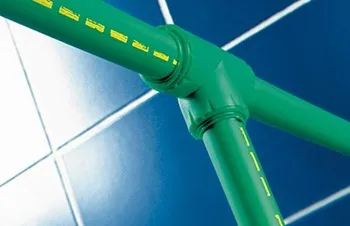Oct . 02, 2024 07:30 Back to list
Hot and Cold Water Line Solutions for Kitchen Sinks
Understanding Kitchen Sink Hot and Cold Water Lines A Comprehensive Guide
When it comes to kitchens, the sink is arguably the most essential element. It serves numerous purposes, from washing dishes to preparing food. An integral part of the kitchen sink system is the hot and cold water lines, which ensure you have access to water at the right temperature. In this article, we will explore the various products associated with kitchen sink hot and cold water lines and discuss their importance, installation, maintenance, and recent innovations.
The Importance of Hot and Cold Water Lines
Hot and cold water lines are crucial for a functional kitchen. Hot water is essential for cleaning tough stains, cooking, and sanitizing kitchen items, while cold water is primarily used for rinsing and drinking. The convenience of having immediate access to both temperature options cannot be overstated.
Key Components of Kitchen Sink Water Lines
1. Supply Lines These are the pipes that transport water from your home's main water supply to the kitchen sink. They typically consist of two main lines one for hot water and one for cold water. Common materials used for these pipes include copper, PVC, and PEX, each offering unique advantages in terms of durability, flexibility, and ease of installation.
2. Shut-off Valves Located under the sink, shut-off valves enable you to control the flow of hot and cold water. Should a leak occur or repairs be necessary, these valves allow you to quickly stop the water supply, preventing further damage.
3. Faucets The faucet is the most visible and user-friendly component of the water line system. It blends aesthetics with functionality, with a variety of styles available to suit different kitchen designs. Modern faucets often come with features like pull-down sprayers, touchless operation, and water-saving capabilities.
4. Flex Connectors These are flexible hoses that connect supply lines to the faucet. They are easy to install, reduce the risk of leaks, and can accommodate small movements and vibrations.
Installation of Hot and Cold Water Lines
When installing water lines, it’s vital to ensure that both lines are positioned correctly. Typically, the hot water line is connected to the left side of the faucet, while the cold water line connects to the right. Proper installation also requires checking for leaks and ensuring that all connections are tight.
kitchen sink hot cold water lines products

If you are unsure about the installation process, it may be worthwhile to consult a professional plumber. They can ensure that the job is done efficiently and in accordance with local plumbing codes.
Maintenance Tips for Longevity
To keep your kitchen sink's hot and cold water lines functioning optimally, regular maintenance is essential
- Inspect for Leaks Periodically check for any signs of leaks around the sink. Water pooling under the sink or damp spots on surrounding surfaces can indicate a problem. Promptly dealing with leaks can save on costly water bills and prevent further damage.
- Flush the Lines Sediment and mineral buildup in your pipes can affect water flow and quality. Flushing the lines periodically can help maintain their efficiency.
- Replace Old Components If you’re experiencing persistent problems with your faucet or water lines, it might be time to replace aging components. Upgrading to newer materials, such as PEX, can enhance durability and resistance to corrosion.
Innovations in Kitchen Sink Water Lines
Recent technology advancements have led to the development of smart faucets and water filtration systems that integrate with the hot and cold water lines. Smart faucets can be activated by voice commands or touch, offering convenience and improved hygiene. Integrated filtration systems ensure that the water you use for cooking or drinking is clean, safe, and free from contaminants.
Conclusion
Kitchen sink hot and cold water lines are essential for any modern kitchen. Understanding their components, installation, maintenance, and recent innovations can improve the functionality and convenience of your kitchen. Whether you are looking to undertake a DIY project or hire a professional, ensuring that your water lines are in top shape will significantly enhance your overall kitchen experience. Proper care will lead to a reliable and efficient water supply, ultimately contributing to a more enjoyable cooking and cleaning experience.
-
High-Quality PVC Borehole Pipes Durable & Versatile Pipe Solutions
NewsJul.08,2025
-
High-Quality PVC Perforated Pipes for Efficient Drainage Leading Manufacturers & Factories
NewsJul.08,2025
-
High-Quality PVC Borehole Pipes Durable Pipe Solutions by Leading Manufacturer
NewsJul.08,2025
-
High-Quality PVC Borehole Pipes Reliable PVC Pipe Manufacturer Solutions
NewsJul.07,2025
-
High-Quality UPVC Drain Pipes Durable HDPE & Drain Pipe Solutions
NewsJul.07,2025
-
High-Quality Conduit Pipes & HDPE Conduit Fittings Manufacturer Reliable Factory Supply
NewsJul.06,2025

